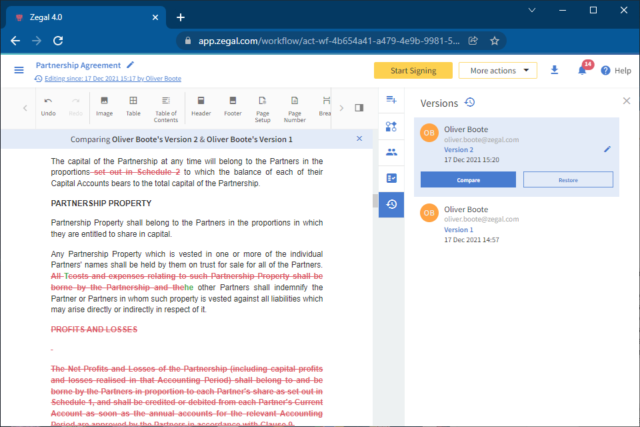How to Dissolve a Trust in the UK
English trust law emerged from equity, demonstrating how a rule-based legal system can attain fairness in individual circumstances.
Rooted in conscience, trust law evolved to regulate the actions and conscience of individuals vested with property on behalf of others.
Since its inception, trust law has expanded through common law and statute law, reflecting the commercial utility of trusts and the need for certainty in their operation.
This article will cover:
- The definition of a trust
- Various types of trusts
- The parties involved
- Reasons for dissolving a trust
- Methods for dissolving a trust
What is a trust?
A trust divides legal and beneficial ownership of property among one or more trustees (legal owners) and beneficiaries (beneficial owners).
If created for immediate effect during a person’s lifetime, it’s typically evidenced by a trust deed, also known as a settlement. The trust duration is at the settlor’s discretion but must be specified in the trust document.
It could last a few years, perhaps during a person’s widowhood or until a child reaches a certain age or marries. If created upon or shortly after a person’s death, the trust rules are outlined in the will, forming a Will Trust.
Who are the parties in a trust?
The Settlor
This individual transfers property (like shares, land, money, or valuable jewellery) to the trustee for the benefit of beneficiaries, possibly with instructions on property management and the conditions for beneficiaries to gain full legal ownership.
The Trustee
Trustees, holding the legal title, manage the trust in line with the trust instrument and law. Their duties can include:
- Asset investment.
- Maintaining and enhancing trust property for beneficiaries.
- Handling trust property transactions.
- Meeting tax obligations.
Trustees decide the distribution of trust assets to beneficiaries and may be individuals or legal entities, including foreign nationals, relatives, or companies.
However, minors cannot be trustees. Trusts typically have multiple trustees and won’t fail for lack of one. Trustees are appointed in the trust document, but courts can appoint, replace, or remove trustees. Settlors may nominate themselves and their spouses as trustees.
The Beneficiaries
Beneficiaries hold the beneficial interest in the trust property, receiving income or the property itself per the trust terms. While establishing the trust, the settlor has broad discretion within legal limits.
Beneficiaries can be individuals, companies, or charities and may include minors or individuals with mental disabilities. Trusts can also benefit unborn children, provided they vest within the applicable perpetuity period.
What are the different types of trust?
Trusts are primarily categorised as express, resulting, constructive, and implied.
Express trusts
Intentionally created by the settlor, these involve specifically identified property, beneficiaries, and settlor-defined terms. Legal title transfer to trustees is essential for the trust’s effectiveness.
Resulting trusts
This is implied by courts when a settlor transfers title without identifying beneficiaries, resulting in the trustee holding the beneficial interest on trust for the settlor.
Constructive trusts
Arise when a defendant’s unconscionable act results in property gain, creating an equitable interest for the rightful owner from the act’s time.
Implied trusts
Less common, these arise from inferred settlor intention through their conduct, language, or relationships.
Why dissolve a trust?
Trusts generally dissolve on the vesting date but may need early dissolution due to:
- Where the trust is no longer needed: For example, a family trust set up between husband and wife who later separated.
- The object and purpose of the trust are achieved: For example, the trust was set up to run a business, and then the business was sold).
- The cost of running and maintaining the trust is too high: For example, the financial and tax benefits of using a trust are limited, and the cost of running and maintaining it is too high.
- Where the court orders the trust to be dissolved: For example, if a court rules it is a sham trust).
The dissolution of a trust
The most straightforward method to dissolve a trust is by establishing a vesting date, which marks the trust’s official conclusion and outlines the deed’s termination details.
This process involves the trustee allocating assets to the beneficiaries. In adopting this approach, the trustee must:
- Ascertain the best action for each asset, such as transferring to a beneficiary or selling it with the proceeds distributed to the beneficiaries.
- Settle all liabilities associated with the deed.
- Prepare and independently verify trust accounts.
- On the designated day, the trustee must officially allocate all property to the beneficiaries by the deed and record both the distributions and the deed’s dissolution.
Revocation by the Settlor or Trustee
The trust deed might include a clause allowing the trustee or settlor to revoke it. Absent such a clause, the deed remains binding. Revocation necessitates adhering to the deed’s specific provisions for dissolution, involving necessary paperwork and preparation. Beneficiaries must also have access to the formal records.
Beneficiary consent
Under the precedent set in Saunders v Vautier (1841) EWHC Ch J82, beneficiaries meeting specific criteria can consent to early termination of a trust and acquire legal title to the held property.
The courts recognise the importance of beneficiary rights over settlor intentions. The criteria are:
- Absolute entitlement of beneficiaries to the trust property, meaning sole rights to the assets. Absolute entitlement also includes exclusive rights to instruct trustees on asset management.
- Mutual and unanimous consent among all beneficiaries.
- All beneficiaries must be adults over 18 with legal capacity (sui juris). This excludes minors, those without legal capacity, or nonexistent beneficiaries. Thus, the rule is inapplicable if any beneficiary is under 18 or unable to consent legally.
- The Saunders v Vautier rule effectively allows beneficiaries to request property from the trustees, terminate the trust, and distribute the trust property as desired, bypassing court intervention.
Court order
Additionally, the court retains the authority to mandate the dissolution of a trust.
If in doubt, seek expert help
In summary, while the intricacies of trust law in the UK, encompassing various types of trusts, the roles of parties involved, and the processes for dissolution, can appear daunting, tools like Zegal provide a streamlined, user-friendly solution.
Zegal offers access to a wide range of legal documents and guidance, making the management of trusts and other legal documents more accessible and efficient.
Whether you’re an individual dealing with personal trusts or a professional managing complex legal structures, Zegal’s digital platform simplifies legal compliance, ensuring you can navigate trust law’s complexities with confidence and ease.








